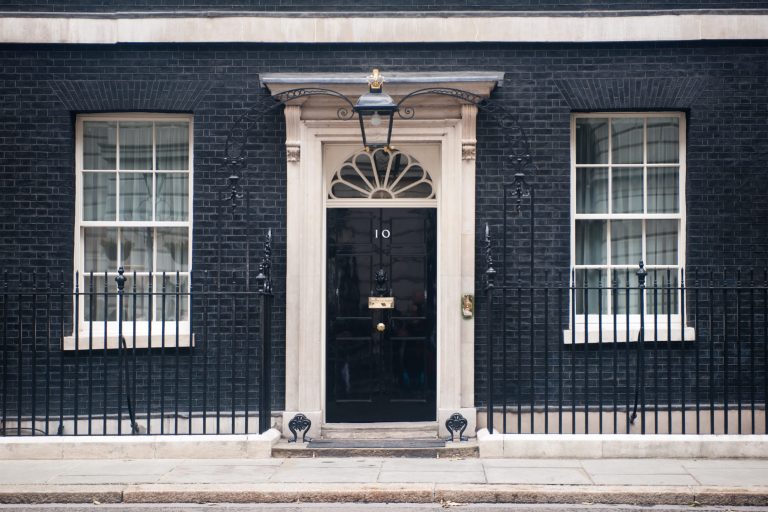On 19th September, the Bank of England decided to maintain the base interest rate at 5%, following a recent cut from 5.25% in August, the first reduction in this cycle. With the next review scheduled for 7th November, Isle of Man residents are closely watching how these decisions will affect their finances. As the economic landscape shifts, it’s important to understand what this means for homeowners, savers, and investors on the island.
What’s at Stake for Homeowners?
For current homeowners, particularly those with variable-rate mortgages, the decision to hold the rate at 5% provides some much-needed relief. Variable mortgage holders, whose payments fluctuate with changes in the base rate, can now expect some stability and potentially even a reduction in monthly payments if rates continue to fall in the coming months, as anticipated. While this offers immediate relief, homeowners should remain cautious, as interest rate volatility could return based on upcoming economic data.
For those coming off historically low fixed-rate mortgages, locked in during the pre-2022 ultra-low rate period, the picture is more complex. Although rates may not return to the historic lows of recent years, the downward trend provides hope that new fixed-rate deals will be more affordable by the time their current agreements expire. Borrowers should be proactive by exploring options early and keeping a close eye on market movements to secure the best possible rate when refinancing.
Aspiring homeowners face a different reality. While the recent rate cut may ease some financial strain, interest rates remain relatively high compared to recent years. Lending conditions are likely to remain tight, with banks cautious about extending credit in this high-rate environment. Buyers may need to pass stricter affordability checks and provide larger deposits to secure financing. Although a consistent downward trend in rates may improve conditions over time, it could also push property prices higher, creating a potential double-edged sword for prospective buyers.
Savings and Investments: Challenges and Opportunities
The decision to hold the rate at 5% also has significant implications for savers. While local Isle of Man banks continue to offer higher interest rates on deposits compared to previous years, any future rate cuts could mean that elevated returns will be short-lived. Savers should be cautious, as further reductions in interest rates will directly affect the returns on cash accounts, especially as inflation continues to erode purchasing power.
For those relying on cash savings as part of their long-term strategy, now is the time to shop around for the best available options. With inflation persisting, the real value of savings could diminish, even in accounts offering seemingly attractive rates, if a good deal cannot be found.
For investors in the stock market, the current interest rate trajectory signals potential for increased market activity. Historically, a downward trend in interest rates has correlated with looser monetary policy, which enhances liquidity and encourages investment in equities. This could present opportunities for Isle of Man residents looking to invest in the stock market, particularly in sectors that perform well under lower interest rate conditions, such as technology.
However, investors should remain cautious and informed. While lower interest rates tend to boost stock market growth, the current global economic climate remains unpredictable. Monitoring economic indicators—both globally and locally—will be essential. Factors such as geopolitical tensions, weak economic outlooks, or unexpected inflation spikes could disrupt potential growth. Diversifying your portfolio with a mix of equities and more conservative investments can help manage risk in these uncertain times.
The Isle of Man’s Local Economic Context
The Bank of England’s decisions have significant knock-on effects for the Isle of Man’s economy, which, while independent, is closely linked to the UK. Local banks, real estate, and businesses are all sensitive to interest rate fluctuations. The island’s housing market, which has seen steady price growth in recent years, may already be feeling the effects of persistently high rates. Although the recent cut may lower borrowing costs slightly, it will likely take time for these changes to filter down to local buyers and sellers. For now, housing demand may remain tempered by higher financing costs, especially for those trying to enter the market.
Similarly, local businesses that rely on bank financing to expand operations or hire new employees may be constrained by higher borrowing costs. While the recent rate cut offers hope for reduced costs in the future, many businesses remain cautious. Managing existing debt wisely and waiting for more favourable lending conditions will be key for local enterprises as interest rates potentially fall in the coming months.
However, the Isle of Man’s financial services sector, a key driver of the island’s economy, could benefit from a more liquid financial environment. As rates decrease, it could create opportunities for investors and entrepreneurs alike. In light of political uncertainty across the water, the Isle of Man may continue to be an attractive destination for both local and international investment.
Looking Ahead: Preparing for the Next Move
With the next rate review looming on 7th November, all eyes are on the Bank of England and the latest economic data. Another rate cut is expected, depending on factors such as inflation, employment trends, and economic growth. While this could bring further relief to borrowers and investors, the overall economic environment remains fluid, and nothing is guaranteed.
Isle of Man residents should prepare for any eventuality. Homeowners should reassess their mortgage deals and consult with financial advisers to navigate this changing landscape. Savers should remain vigilant, ensuring their deposits yield the best possible returns. Investors should stay informed on global market trends, ready to capitalise on new opportunities while remaining mindful of the risks associated with the current economic conditions.
Conclusion: Stability and Caution
The Bank of England’s decision to hold the base rate at 5% brings both stability and uncertainty for Isle of Man residents. While homeowners and investors may feel some relief from the downward trend in rates, the high-rate environment continues to pose challenges for aspiring homeowners. By taking a proactive approach—whether by reviewing mortgage terms, shopping for the best savings rates, or diversifying investments—residents can better navigate the months ahead as we approach the next major decision point in November.
The best strategy is to stay informed, remain flexible, and be prepared for the shifting economic winds that may soon follow.
The information provided on the pages, blogs and articles contained within this website are solely for information purposes only and do not constitute financial advice. Professional advice should always be sought from a financial adviser.



